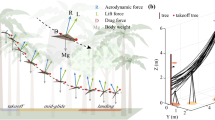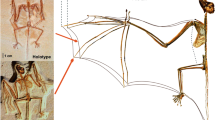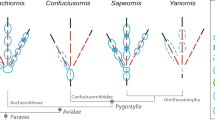Abstract
YALDEN, in calculating the flying speed of Archaeopteryx, states1 that he includes the areas of the body strip and tail, and assumes the same lift coefficient for both the wing and tail surfaces. Heptonstall in an earlier letter2 does not include the body strip because “it does not behave like an aerofoil in generating high lift”.
This is a preview of subscription content, access via your institution
Access options
Subscribe to this journal
Receive 51 print issues and online access
$199.00 per year
only $3.90 per issue
Buy this article
- Purchase on SpringerLink
- Instant access to full article PDF
Prices may be subject to local taxes which are calculated during checkout
Similar content being viewed by others
References
Yalden, D. W., Nature, 234, 479 (1971).
Heptonstall, W. B., Nature, 231, 128 (1971).
Etkin, B., Dynamics of Flight (Wiley, New York, 1959).
Duncan, W. J., Control and Stability of Aircraft (Cambridge University Press, 1959).
Glauert, H., Elements of Aerofoil and Airscrew Theory (Cambridge University Press, 1948).
Milne-Thomson, L. M., Theoretical Aerodynamics (Macmillan, New York, 1966).
Flax, A. H., and Lawrence, H. R., J. Aero. Sci., 21, 289 (1954).
Bramwell, C. D., Nature, 231, 128 (1971).
Author information
Authors and Affiliations
Rights and permissions
About this article
Cite this article
CAREY, D. Flying Ability of Archaeopteryx. Nature 239, 525 (1972). https://doi.org/10.1038/239525a0
Received:
Issue date:
DOI: https://doi.org/10.1038/239525a0



